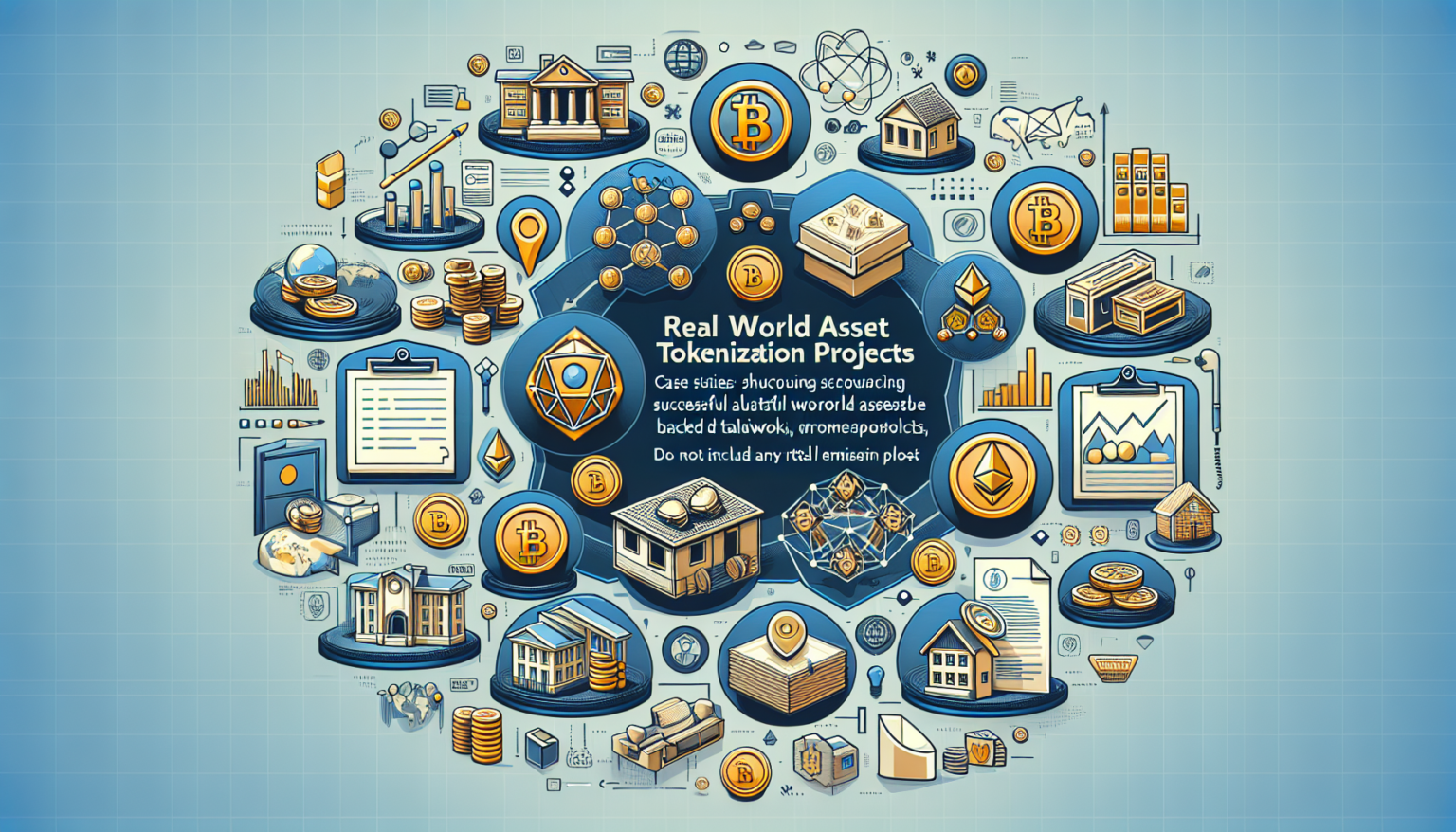Understanding RWA Tokenization
Real-world asset (RWA) tokenization refers to the process of representing tangible assets such as real estate, commodities, or equities on a blockchain. This digital representation aims to enhance liquidity, streamline transactions, and provide access to a broader range of investors. In the recent years, several projects have ventured into this space, each illustrating different methodologies and success stories.
Case Study 1: CurioInvest
Overview
CurioInvest focuses on tokenizing luxury cars. By allowing fractional ownership of high-value vehicles, CurioInvest provides car enthusiasts and investors an opportunity to share in the ownership of asset classes that were previously out of reach for most.
How They Did It
The process begins with an in-depth evaluation of the luxury car’s market value, condition, and documentation. Once the due diligence is complete, the car is acquired and then tokenized on the blockchain. This tokenization allows users to buy shares in the car, treating it similarly to how stock shares are traded.
Success Factors
The success of CurioInvest lies in its strong community engagement and innovative marketing strategies. They have built a loyal following by providing educational resources about investing in luxury cars, ensuring their investors feel confident in their investments.
Key Takeaways
– Focusing on a niche market allowed CurioInvest to stand out.
– Community engagement fosters loyalty and trust.
– Educational resources enhance investor confidence.
Case Study 2: RealT
Overview
RealT specializes in tokenizing real estate properties. The company provides individuals the chance to invest in income-generating properties through fractional ownership, allowing broader access to the real estate market.
How They Did It
RealT acquires properties, conducts due diligence, and then issues tokens that represent fractional ownership. Investors can purchase these tokens via cryptocurrency, and each token holder receives a proportional share of rental income, distributed in cryptocurrency.
Success Factors
RealT has experienced significant growth due to simplicity in its investment model and robust asset management practices. By ensuring transparency and utilizing blockchain technology, the platform provides a seamless experience for users.
Key Takeaways
– Fractional ownership democratizes real estate investments.
– Transparency in operations builds trust with investors.
– A user-friendly platform is crucial for attracting investors.
Case Study 3: Myco
Overview
Myco has ventured into the space of sustainable assets by tokenizing timberland. By enabling investments in timber, Myco addresses both investment and environmental sustainability.
How They Did It
Myco sources sustainably managed forests, tokenizing the timber harvested from these lands. Investors can buy tokens that grant them rights to a portion of the timber sales, and profits generated from the sales are distributed to token holders.
Success Factors
What sets Myco apart is its dual focus on profitability and sustainability. By creating an investment opportunity that also contributes positively to the environment, they have cultivated a niche market.
Key Takeaways
– Aligning investment opportunities with sustainable practices attracts socially responsible investors.
– Highlighting environmental impact can enhance brand loyalty.
– A clear revenue model is essential for investor confidence.
Case Study 4: Imbrex
Overview
Imbrex is a real estate platform designed specifically for property listings on the blockchain. The aim is to provide a decentralized marketplace for real estate transactions.
How They Did It
By integrating the blockchain into property listings, Imbrex allows property owners, agents, and buyers to interact on a transparent platform. Each property can be tokenized, and interactions between parties are recorded immutably on the blockchain.
Success Factors
The transparent nature of their platform, combined with decentralized listings, has garnered attention from real estate professionals looking for innovative solutions to complex problems.
Key Takeaways
– A decentralized marketplace reduces transaction costs and inefficiencies.
– Blockchain transparency is a significant value proposition.
– Collaboration with real estate professionals fosters adoption.
Case Study 5: Mattereum
Overview
Mattereum is focused on bridging the gap between physical assets and smart contracts. The platform aims to tokenize a variety of real-world assets, from real estate to rare collectibles.
How They Did It
Mattereum uses a process of legal and technological integration to ensure that physical assets are accurately represented by their tokenized versions. Smart contracts can execute transactions automatically when conditions are met, enhancing efficiency and reducing the need for intermediaries.
Success Factors
One of the key factors for Mattereum’s success is its innovative use of governance models that intertwine legal rights with digital ownership. This approach provides clear pathways for investors regarding their asset rights.
Key Takeaways
– Combining legal frameworks with blockchain technology mitigates risks.
– Smart contracts can significantly reduce transaction times and costs.
– Legal clarity enhances investor confidence.
Case Study 6: Wine Vault
Overview
Wine Vault aims to tokenize fine wines, making it accessible to a broader demographic of investors. It allows individuals to invest in premium wine collections without needing to purchase entire bottles.
How They Did It
The platform evaluates and purchases fine wines, which are then stored and insured. Each bottle’s value is assessed, and fractional ownership is offered via tokenization. Investors can buy, sell, or hold their tokens based on the market dynamics of fine wine.
Success Factors
Wine Vault has succeeded by catering to a growing interest in alternative investments. The branding around luxury lifestyle appeals to investors looking for both enjoyment and profit.
Key Takeaways
– The appeal of luxury goods can drive investor interest.
– Transparency in asset valuation is critical.
– Market trends can significantly impact return potential.
Case Study 7: Goldfinch
Overview
Goldfinch focuses on providing credit for underbanked communities by using decentralized financing (DeFi) principles. They tokenize loans to fund small businesses, especially in emerging markets.
How They Did It
Goldfinch utilizes a unique mechanism where investors provide capital that is secured through crypto-backed loans. Each loan is tokenized, allowing investors to participate in a diversified portfolio of loans.
Success Factors
Goldfinch emphasizes social impact alongside financial return, creating a robust narrative that appeals to socially-conscious investors. Their transparent credit underwriting process builds trust among participants.
Key Takeaways
– Combining social impact with investment opportunities can open new markets.
– Transparency in the credit process fosters investor confidence.
– DeFi models introduce innovative ways to engage investors.
Final Thoughts on RWA Tokenization
Through these diverse case studies, it’s evident that the landscape of RWA tokenization is evolving rapidly. Each project highlights unique approaches, addressing specific market needs while leveraging the benefits of blockchain technology. As more sectors contemplate tokenization, the possibilities across various industries seem endless.








